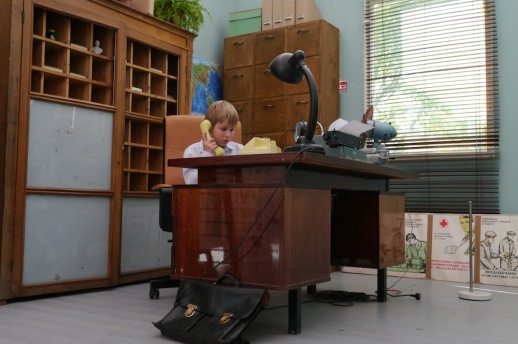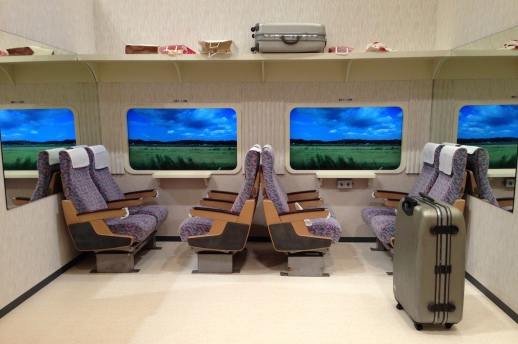A World of Image-Making
Right now, Tokyo audiences are being offered exhibitions focusing on three renowned filmmakers. The first is Tim Burton, whose storyboards, sketches and props are on display at the Mori Arts Centre until January 4th. The second is an exhibition and screening program of the films and music of Jacques Demy at the National Film Center. Third is French musician, artist and filmmaker Michel Gondry, who has cultivated over the past two decades a reputation for innovative and whimsical moving images.
In the 1990s, it was music videos that first gained him recognition internationally. Before creating highly original work with performers such as Bjork, Daft Punk, The Chemical Brothers, Radiohead and Beck, Gondry started by making music videos for his own band, the French group Oui Oui. Moving from music videos to film, he has been the creative force behind Eternal Sunshine of the Spotless Mind, Be Kind Rewind, The Science of Sleep and Dave Schappelle’s Block Party.
“Around Michel Gondry’s World” is not his first step into the art world; a previous exhibition, “The Science of Sleep: An Exhibition of Sculpture and Pathological Creepy Little Gifts,” featured sketches and props from the eponymous film and was held in New York.
Inspired by the success of this show, Gondry went on to conceive “Home Movie Factory,” a dominant part of the current exhibition at the Museum of Contemporary Art. In the spirit of his 2008 film Be Kind Rewind, it is a traveling project that allows exhibition-goers to work in groups and make their own films. Participants can choose from a dozen film sets–including a kitchen interior, bullet train, restaurant, video store or police station–in which to act out and record their original scripts. It offers a special experience for a limited number of museum-goers, with the outcome dependent on the creative choices of all its amateur participants.


But how does this work as a visual display? For those not participating as impromtu-filmmakers, the film sets themselves are on display. The details and very local specifications (including Japanese food items in the pantry, for example, or Tokyo Police Department posters or cardboard box homeless shelters) hold a great deal of charm. In addition to “Home Movie Factory,” visitors are offered a small number of props and sketches from Gondry’s films.
Finally, there’s the inclusion of 19 of Gondry’s music videos. Most visitors would already be familiar with Gondry’s work in this field, so in the playful spirit of the filmmaker himself, the videos are presented in an original way. Viewers watch the works by walking around a labyrinthine series of screens in which the videos are played for only 10 seconds at a time. Individual wireless headphones provide the sound when standing at specific points inside the display. Within these limitations, consuming the videos can be rather odd, even slightly frustrating. However, fans of Gondry may also appreciate the creator’s desire to design an original experience. His desire to never finish experimenting with his craft naturally extends to the creation of the exhibition itself. Without a linear, chronological display, it’s a challenge that encourages viewers to prolong their browsing and make more than one lap around the rooms.
“Around Michel Gondry’s World” is much more than just a display of the man’s oeuvre. It’s a boldly original experience that complements the filmmaker’s much-celebrated process.
Emily Wakeling
Emily Wakeling



